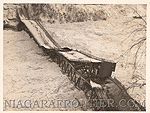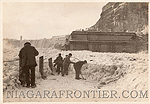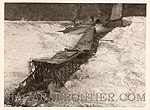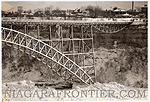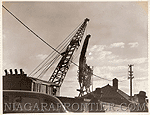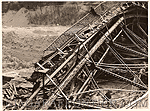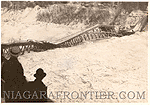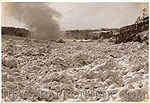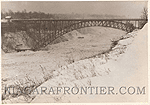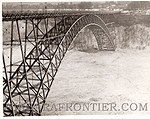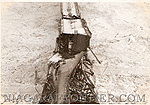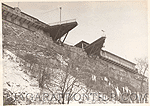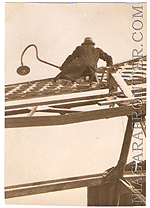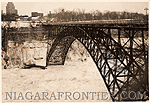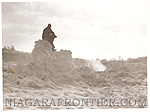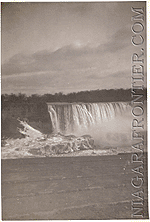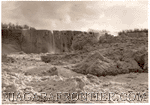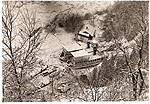Niagara Falls
COLLAPSE OF THE
HONEYMOON BRIDGE
Photography by Madison Sale
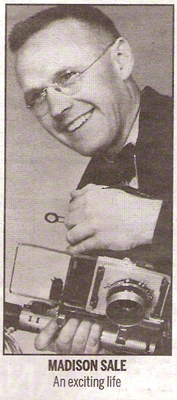
Madison "Mad" Sale was born in Toronto on December 29th 1910.
He grew up in the Toronto Beaches area. After graduating from the Danforth Technical School, he started working at the Toronto Telegram Newspaper (then known as the Evening Telegram) in 1928 as an $8 a week layout artist. He would continue to work at the Telegram until it closed in October of 1971.
Madison began his career as a cartoonist but soon gravitated to photography where he continued this trade for the rest of his newspaper days. Throughout his career, Madison was on the scene of some of the most historical events of his day. He photographed people, places and events including the famous and infamous.
During his career he had a running battle with competing reporters and photographers but because he was able to drive away from the scene on his motorcycle, he often was able to hand in his photographs and cutlines to the news desk first. Not surprisingly, his photographs would win him numerous newspaper awards for his efforts. In addition, Madison was a professional motorcyclist.
One such event was In January 1938 when Madison covered the collapse of the Honeymoon Bridge in Niagara Falls.
Madison died following a stroke on March 1st 2007 in Beeton, Ontario at the age of 96 following a remarkable life and career.
With the assistance of his family, the pictures Madison took of his coverage of the collapse of the Honeymoon Bridge have been made available (at left).
The Collapse of the Honeymoon Bridge
On January 23rd 1938, a sudden wind storm on Lake Erie sent a deluge of ice down river and over the Falls. Within twelve hours the river below the Falls was jammed with ice of such enormous proportions that the ice pressure pushing against the bridge abutments and the hinge supports of the arch caused severe structural damage. It was only a matter of time until the bridge would collapse.
The bridge remained intact for several days, drawing thousands of people who came to wait for the end of the bridge to come.
The end of the Upper Steel Arch Bridge (Honeymoon Bridge) came at 4:20 p.m. on January 27th 1938, when the span broke free and fell into the gorge onto the ice on the river below. The ice had pushed the bridge away from its abutment on the American side causing the bridge to be pulled of its abutment on the Canadian shore. It fell to the river in one piece.
On February 2nd, salvage operations began with attempts to break the bridge into four parts and to remove the debris lying on the slopes of the gorge walls.
For safety sake the span was broken into two pieces by use of dynamite. The two pieces of the center span of the bridge remained on the ice until April 12th-13th 1938 when the ice broke apart and the two pieces disappeared under the surface.
On April 12th 1938 at 7:10 a.m., the American section of the Falls View Bridge sank below the water surface.
On April 12th 1938 at 8:10 a.m., the center section of this bridge sank into the river.
On April 12th 1938 at 3:45 p.m. (some say 3:25 p.m.) the remaining Canadian portion of this bridge began floating downriver on top of an ice flow. As the ice flow reached the area of the Niagara River opposite Otter Street (Canadian street) and the Niagara Falls (New York) Waste Disposal Plant, this section rolled off of the flow and sank into the water into what is believed to be the deepest part of the Niagara River.
| NIAGARA FALLS THUNDER ALLEY NAVIGATOR | ||
| SITE MAP | ||
: niagarahistory@gmail.comThe preceding locations and facts about them are but a few of many famous sites & attractions to be found in Niagara Falls. The best of it is FREE to see...so think of Niagara Falls when planning your next vacation. If you have questions of a current or historical nature about the Niagara Falls area or suggestions feel free to e-mail Rick at
THANK YOU FOR VISITING THE
NIAGARA FALLS
HONEYMOON BRIDGE
